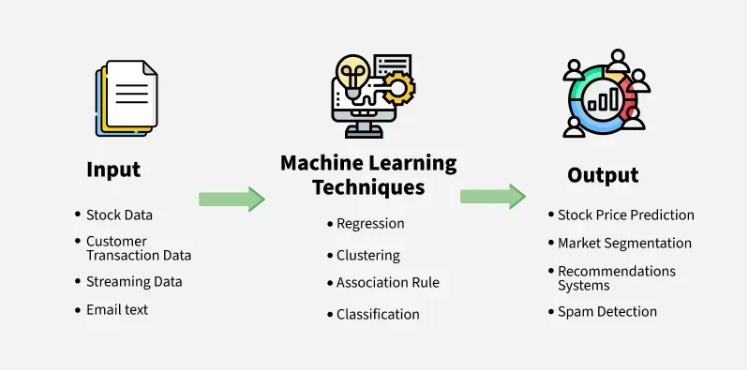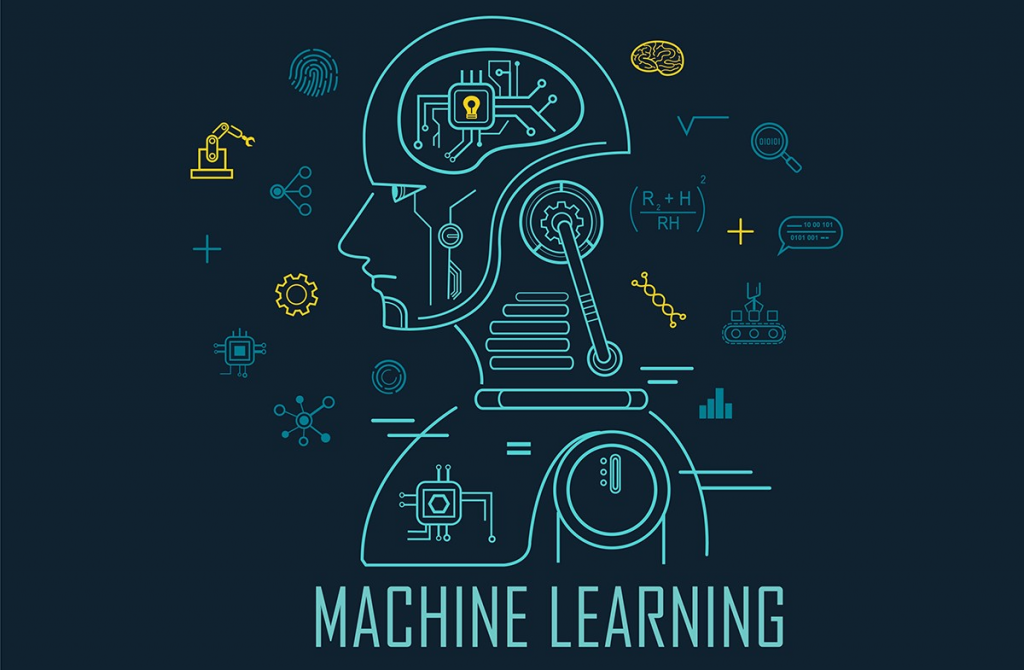Machine learning (ML) is behind many of the tools we rely on daily—think recommendation systems or voice assistants. But what is it, exactly?
In short, ML is a branch of artificial intelligence (AI) that trains algorithms on data to build models capable of doing things usually reserved for humans—like sorting images, analyzing patterns, or predicting trends. Today, it’s one of the most widely used forms of AI, quietly powering many of the digital services we interact with every day.

How does machine learning work?
At first glance, machine learning sounds simple: it uses algorithms—basically rule-based instructions—trained on past data to make predictions or classifications when faced with new input. For instance, an algorithm might study thousands of labeled flower images to learn how to identify a new flower based on what it’s seen before. ML is also used to detect spam emails, recommend what movie to watch next, predict stock prices, or even help doctors spot diseases in medical scans.
But making these algorithms work well takes a lot of refinement. They need repeated training to build up a reliable set of rules. Once ready, these trained algorithms become "machine learning models"—tools capable of tasks like recognizing images, forecasting housing prices, or even playing chess.
In more advanced cases, multiple algorithms are stacked to form complex systems known as deep learning networks. These can handle far more intricate tasks, like writing human-like text or powering smart chatbots. So, while the core concept is fairly straightforward, the models machine learning produces can grow into highly sophisticated systems.
Machine learning vs. deep learning
As you’re exploring machine learning, you’ll likely come across the term “deep learning.” Although the two terms are interrelated, they're also distinct from one another.Machine learning refers to the general use of algorithms and data to create autonomous or semi-autonomous machines. Deep learning, meanwhile, is a subset of machine learning that layers algorithms into “neural networks” that somewhat resemble the human brain so that machines can perform increasingly complex tasks.
Types of machine learning
Many of the digital products and services we rely on daily are driven by various forms of machine learning. Although these types aim to achieve a common goal—enabling machines and applications to operate without human input—their approaches differ in certain ways. To clarify how these methods vary, here’s a breakdown of the four main types of machine learning used today.
1. Supervised machine learning
Supervised learning involves training algorithms using labeled datasets, where each data point is paired with a tag that explains what it represents. Essentially, the algorithm is given an "answer key" to help it understand how to process the data. For instance, it might be trained on flower images that are labeled with their respective species, enabling it to recognize those flowers in future images. This type of learning is commonly applied to tasks involving prediction and classification.
2. Unsupervised machine learning
Unsupervised learning trains algorithms using data that hasn’t been labeled. In this approach, the algorithm receives raw data without any predefined tags, requiring it to independently discover patterns or structures within the data. For example, it might analyze a vast collection of untagged user information from a social media platform to detect trends in user behavior. Researchers and data scientists often use unsupervised learning to quickly and effectively uncover insights from large volumes of unstructured data.
3. Semi-supervised machine learning
Semi-supervised learning combines both labeled and unlabeled data to train algorithms. Typically, a small portion of labeled data is used initially to guide the learning process, followed by a much larger set of unlabeled data to further develop the model. For instance, an algorithm might start with a limited set of labeled speech recordings and then use a larger collection of unlabeled audio to build a speech recognition system. This approach is commonly used for classification and prediction tasks when there isn't enough labeled data available.
4. Reinforcement learning
Reinforcement learning trains algorithms through a process of trial and error. In this method, algorithms interact with a specific environment and receive feedback based on the results of their actions. Similar to how a child learns, the algorithm gradually gains insight into its surroundings and learns to adjust its behavior to achieve desired outcomes. For example, it might improve its performance by playing multiple games of chess, learning from both wins and losses. This approach is commonly used to develop models that need to make a series of decisions or actions to reach a goal, such as playing a game or generating a summary of a full text.
Generative AI vs. machine learning
Generative AI tools like ChatGPT, Google Gemini, and Microsoft Copilot are becoming increasingly prevalent in professional settings. These tools can generate original content based on simple prompts, with capabilities ranging from writing text and creating images to analyzing data.Technically, generative AI relies on sophisticated machine learning methods. However, its practical use differs from traditional machine learning: while conventional models are typically designed to carry out specific, repetitive tasks, generative AI focuses on producing novel and adaptive outputs in response to user input.
Conclusion
Machine learning opens up a realm where computers analyze and learn from data to make predictions and decisions. Combining elements of computer science and statistics, this field enables systems to improve their performance gradually without needing direct programming. As machine learning continues to evolve, its uses are set to revolutionize how we engage with technology, becoming an essential part of everyday life.

